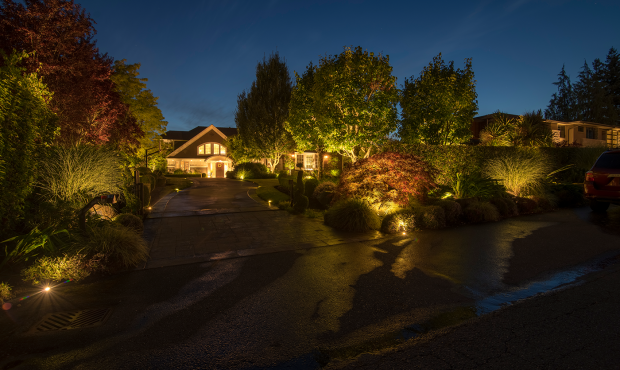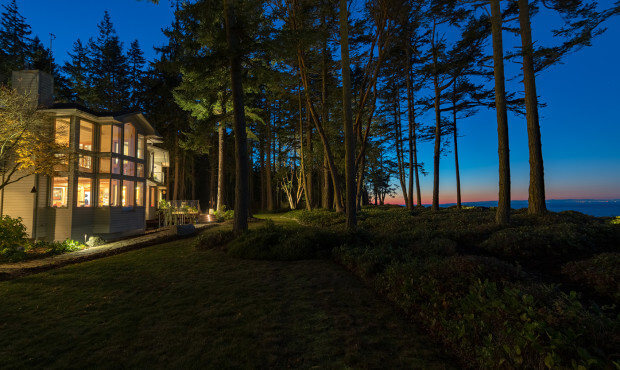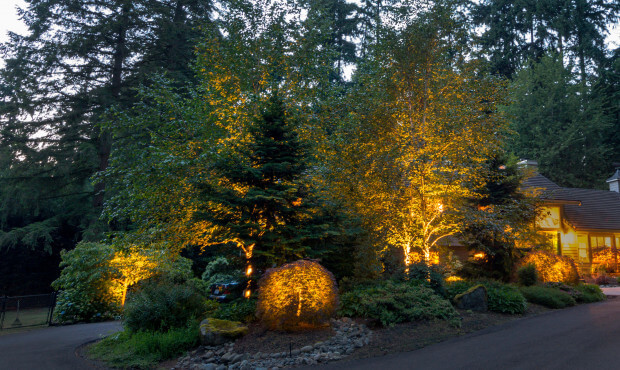The Science of Outdoor Lighting Temperatures
When homeowners think of outdoor lighting, they often picture illuminated pathways, a warm glow across the garden, or dramatic uplighting on favorite trees. But one of the most important design elements is often overlooked: the color of the light itself. Color temperature doesn’t just influence aesthetics—it affects safety, mood, health, wildlife, and even the night sky.
At Northwest Outdoor Lighting (NWOL), we design every system with a full-spectrum approach, combining science, beauty, and environmental responsibility to create the perfect atmosphere for Seattle-area homes.
What Is Outdoor Lighting?
Professional outdoor lighting goes beyond a bulb outside the front door. A complete system includes fixtures, placement, and carefully chosen color temperatures to achieve four key goals:
-
Safety – Illuminating walkways, driveways, and stairs to prevent accidents.
-
Security – Enhancing visibility and deterring unwanted activity.
-
Ambiance – Highlighting architectural details and landscapes with inviting warmth.
-
Functionality – Extending the use of outdoor living spaces after dark.
Each of these goals is best achieved when the color of the light is intentionally designed.
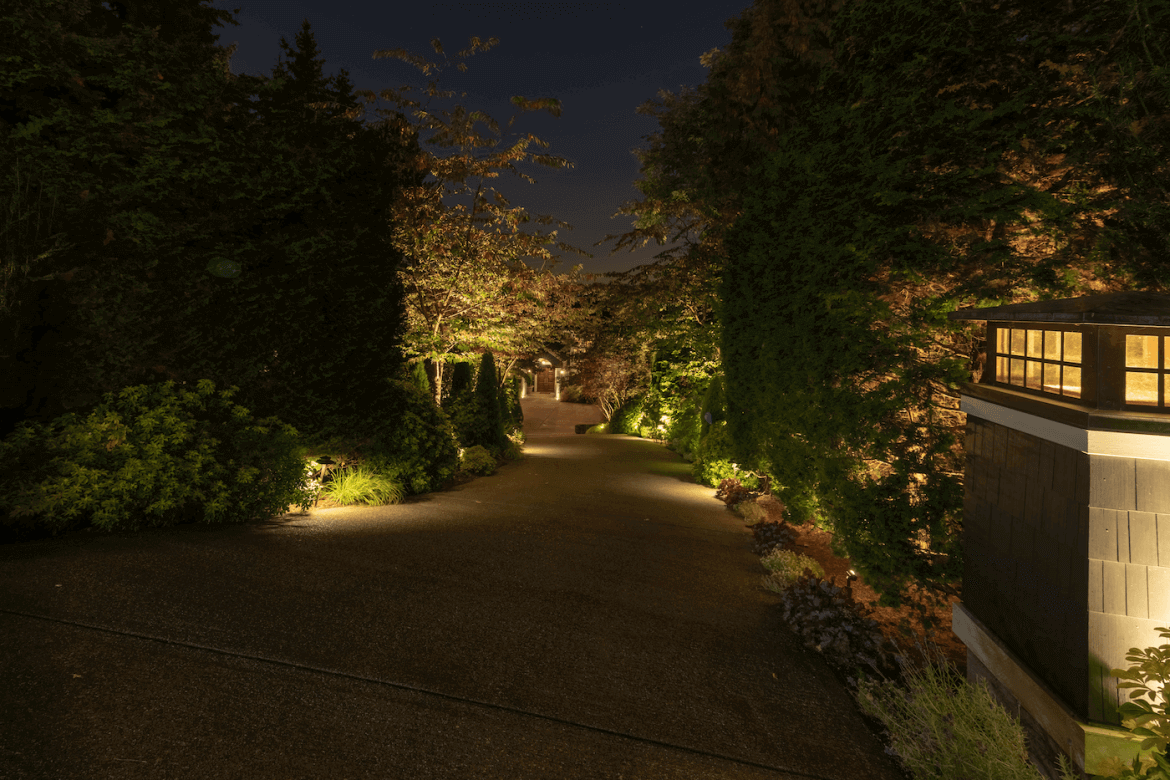
Understanding Color Temperature
Color temperature is measured on the Kelvin (K) scale, which ranges from warm, amber tones to cool, bluish light.
-
2000–2700K (Warm White): Soft, golden tones reminiscent of candlelight.
-
3000K (Soft White): A balanced, slightly brighter warmth ideal for most homes.
-
4000–5000K (Cool White): Bluish light often used in commercial settings.
-
6000K+ (Daylight): Harsh, bright light rarely recommended for residential spaces.
The difference may seem subtle, but the impact is profound. Warm light feels natural and welcoming, while cool light can appear sterile or harsh.
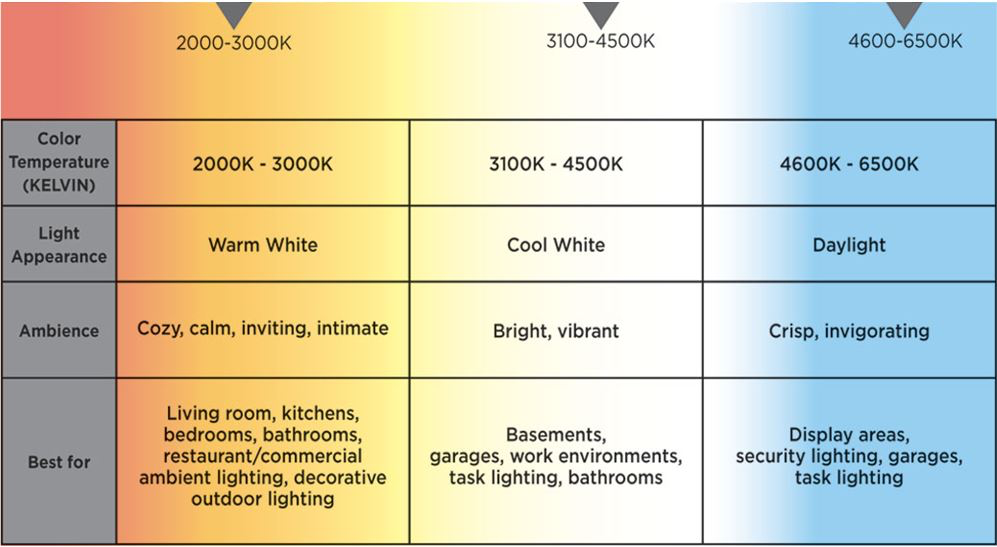
Light and the Circadian Rhythm
Our bodies are governed by the circadian rhythm, an internal 24-hour clock that regulates sleep, hormones, and energy. Light is the primary factor controlling this rhythm:
-
Cool, blue-rich light (4000K+): Suppresses melatonin, signaling the brain to stay awake. Perfect for productivity in the office but disruptive for residential evenings.
-
Warm light (2700K–3000K): Allows melatonin to flow naturally, supporting healthy sleep and relaxation.
This means that installing cooler outdoor lights can unintentionally affect not only your family’s rest but also your neighbors’. By contrast, warm light creates a sense of calm and comfort that aligns with the body’s natural nighttime rhythm.
Common Types of Outdoor Lighting and Their Best Colors
The type of fixture often determines the most effective color temperature:
-
Path and Step Lights – Warm 2700K light guides the way while reducing glare.
-
Uplights – Used to accent trees, sculptures, or stonework. Warm tones highlight texture and depth.
-
Downlights (Moonlighting): Designed to mimic moonlight filtering through branches. Softer, warm light feels most natural.
-
Accent and Spot Lights: Draw attention to focal points. Warmer temperatures enhance beauty without overwhelming the eye.
-
Security Lights: Often too harsh at 5000K. Choosing 3000K balances safety with comfort.
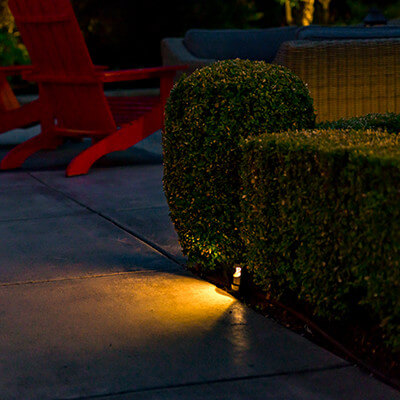
Environmental and Dark Sky Considerations
As an Ally with DarkSky International, NWOL is committed to protecting the night sky. Light pollution from cooler, high-Kelvin lights scatters in the atmosphere, washing out stars and confusing nocturnal wildlife.
Warm lighting (2700K–3000K), paired with properly shielded fixtures, reduces light pollution, protects ecosystems, and preserves the natural nighttime beauty that makes the Pacific Northwest so unique.
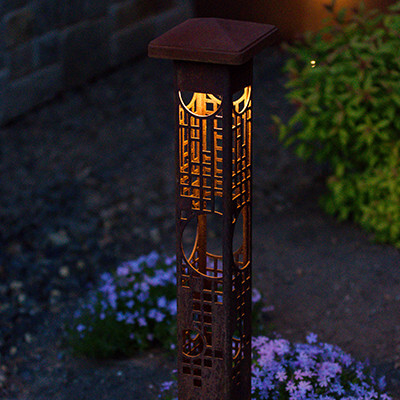
The Allure of the Sunset Tone: Why It Works So Beautifully in the Pacific Northwest
When it comes to choosing the right color temperature for outdoor lighting, the goal is more than simply “seeing at night.” It’s about evoking a feeling. At Northwest Outdoor Lighting, we’ve refined our approach to color over the years in the Pacific Northwest—and one tone has emerged as a clear favorite among homeowners: our Sunset Tone.
This proprietary hue falls just below the traditional 2700K “warm white,” bringing a softer, richer, more atmospheric glow. Rather than leaning yellow or bright white, our Sunset Tone mimics the natural warmth of a golden-hour sky—think embers of a campfire, the last sliver of sun slipping behind the trees, and the soft amber glow that settles over a PNW forest at dusk.
So why has it become the preferred choice across the region?
Designed for the Pacific Northwest Landscape
The PNW is defined by towering evergreens, deep greens, and earthy tones. A cooler white light can feel harsh against this palette, washing out natural textures. The Sunset Tone, however:
-
Enhances wood, stone, and natural foliage
-
Complements mossy greens and cedar tones
-
Creates a cozy, retreat-like atmosphere year-round
Whether illuminating a wooded estate in Woodinville or lining a lakeside pathway on Mercer Island, the Sunset Tone blends into the landscape with effortless harmony.
A Warm, Inviting, Human-Centered Glow
Light influences emotion. Our eyes are biologically drawn to warm light at night—it feels safe, calm, and deeply familiar. The Sunset Tone taps into that instinct, creating spaces that feel:
-
Welcoming when guests arrive
-
Relaxed and peaceful for evening outdoor living
-
Romantic and intimate without being dim
Homeowners consistently tell us this tone changes how their property feels after dark—not just how it looks.
Signature to Northwest Outdoor Lighting
Because of its striking aesthetic and emotional impact, the Sunset Tone has become a signature feature of many of our most iconic installations. If someone in the Seattle area sees a warm, amber-kissed landscape at night, there’s a good chance it’s one of ours.
It’s more than a color temperature—it’s part of our design philosophy: night lighting should enhance nature, not overpower it.

Why NWOL Recommends Warm Light
For most Seattle-area homes, 2700K to 3000K offers the perfect balance of beauty and practicality. Here’s why:
-
Aesthetics: Golden light flatters landscapes, architecture, and stonework.
-
Health: Supports circadian rhythms and reduces eye strain.
-
Safety: Offers clear visibility without glare.
-
Sustainability: Minimizes light pollution and respects wildlife habitats.
Our design team demonstrates different color temperatures during consultations so you can experience the difference for yourself before installation.
Experience the Full Spectrum
Choosing outdoor lighting isn’t about the brightest bulb—it’s about creating a system that harmonizes with your home, your health, and your environment. By blending science, artistry, and sustainability, NWOL delivers outdoor lighting that is as beautiful as it is responsible.
Let us help you design an outdoor lighting system that enhances your home, protects the night sky, and supports your family’s well-being.
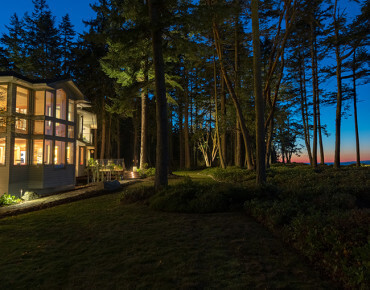
Port Townsend Bay Home
A magical transformation at Pacific Northwest cliffside residence with giant Madrona trees and a unique mermaid in need of some special lighting care.
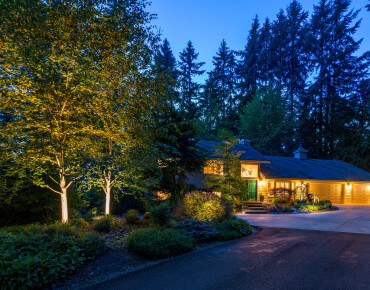
Bellevue Residence
At Northwest Outdoor Lighting, we believe in revealing beauty, not overwhelming it. This Bellevue property now glows with grace.
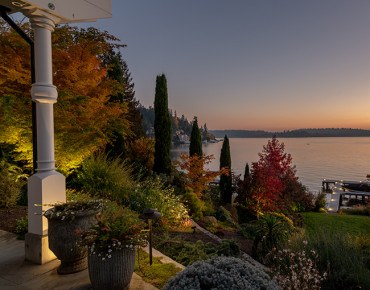
Meydenbauer Bay Home
Warm lighting dapples the colorful landscape of this waterfront property. Whether by land or water, it is a bright beacon for all who pass.



![_Z3A8798_preview[1] (2)](https://nwoutdoorlighting.com/asset/623e557d48ebe/_Z3A8798_preview%5B1%5D-%282%29.jpeg?w=270&h=160&fit=crop)
![_Z3A1323_preview[2] (1)](https://nwoutdoorlighting.com/asset/623e5dabb6475/_Z3A1323_preview%5B2%5D-%281%29.jpeg?w=270&h=160&fit=crop)

